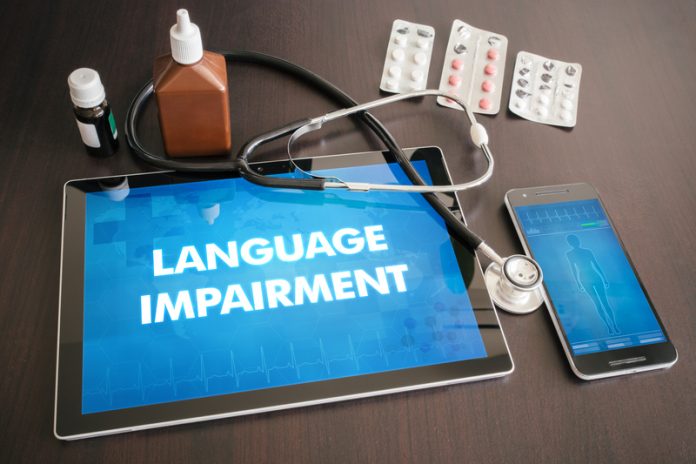It has long been held that a mother’s education is a key factor in the development of their child’s language. However, the link may not be as strong as previously thought, writes Mabel L Rice
Children develop language as they interact with parents, siblings, and people in the neighbourhood. For decades, the extent of mother’s education has been recognised as an important indicator of the resources of the home related to children’s social, cognitive and vocabulary development(1.)
Recently, the New York Times featured an article on its front page that tied higher levels of maternal education to maternal age, due to the additional years of schooling, which in turn delays the start of families but adds to the family financial resources. The age that women become mothers also varies by geography and in the U.S., these factors are also linked to socioeconomic status and urban versus rural residency. In turn, these differences are linked to political decisions and public health policies.
Given the current spotlight on maternal education, it is time to revisit what is known about the relationship of maternal education with children’s language acquisition and whether it plays a role in risk for Specific Language Impairment (SLI), defined as a language disorder that delays the mastery of language skills in children who have no hearing loss or other developmental delays.
It would be tempting to think that maternal education could play a large role in children’s language acquisition, broadly across all dimensions of language, or in accounting for SLI or providing ways for a child to overcome SLI. Such interpretations would not be consistent with available evidence, however, which shows a more complicated picture of the relationship between maternal education and children’s language acquisition.
Effects of maternal education differ depending on the dimension of language studied. For example, relations between maternal education and children’s language differ for words compared to grammar. Comparing the relationship of maternal education and language outcomes in children with and without SLI reveals surprising outcomes that work against simple models of causality or ways to overcome SLI.
Mothers’ education and children’s word learning
The best evidence comes from long-term longitudinal studies of children with and without SLI. In a study of 240 children with SLI and 279 unaffected children that included longitudinal measures from two-and-a-half to 21 years of age, across all participants children of mothers with higher education had higher performance on vocabulary tests over time(2); however, the effect was weak, accounting for 1.3% of the variance on the vocabulary test.
A study of 1,255 twins at four and six years of age reported that children of mothers with higher levels of education had higher scores across multiple outcome measures (vocabulary and grammar(3.) On the other hand, an epidemiological study of 1,766 24-month children reported that risk for late appearance of words was not associated with particular strata of parental educational levels or socioeconomic resources(4.) Perhaps a longer span of word learning is more sensitive to influences of maternal education, or perhaps the effects are not as strong for predicting low levels of word acquisition.
Mother’s education and grammar
An accumulating body of evidence suggests that maternal education does not predict grammar outcomes. In a study of 69 children at risk for delayed language acquisition, because they were treated in neonatal care units at birth, at four years of age, maternal age predicted vocabulary/ semantic outcomes but did not predict grammar outcomes(5.)
Another programme of study focused on the finiteness requirement of verb conjugation in English and other languages (6.)This is the requirement for well-formed sentences to mark past tense, the third person singular -s, conjugated forms of BE copula and auxiliary, and insertion of DO auxiliary in questions such as “What do you want?”
These grammar markers appear in the speech of toddlers, although English-speaking children tend to omit them inconsistently throughout the toddler period and beyond.
In a detailed study of toddlers’ utterances, mothers’ education did not predict change in their toddlers’ use of this markers(7.) In addition, a longitudinal study found that mothers’ education levels do not predict growth in the production of finiteness markers for children with SLI or typically developing children ages 2;6-8;9(8.)
Using a similar task, a study of 130 SLI children, 100 non-specific language impairment (children with low nonverbal IQs), 73 low cognition children (passed language and hearing testing but had low nonverbal IQ) and 117 unaffected controls reported initial test levels in kindergarten for all four groups and longitudinal outcomes for the other three groups between six and 10 years. Mother’s education did not predict accuracy on the grammar marker in kindergarten or growth in accuracy between six and 10 years in any of the groups(9.)
Another study used tasks requiring children between the ages four and eight to make judgments of sentences similar to sentences they produce with omitted finiteness markers and compared children with SLI, younger controls and same age controls. Mothers’ education did not predict growth in children’s judgments of errors for any of the groups(10.)
A further study documented ongoing acceptance of omitted BE and DO in questions, in children with SLI but not their unaffected peers aged six to 15. Mother’s education did not predict performance for either group of children on this grammar task(11.)
In a large sample of 16-year-old twins, the correlation of mothers’ education with grammaticality judgments for the question finiteness task was .16, statistically significant but low, accounting for only .0256% of the variance(12.)
Another measure of young children’s early language is their mean length of utterances, measured in words and morphemes such as finiteness markers and others such as plurals and prepositions. In a longitudinal study of an SLI group and a younger MLU-matched group, mother’s education did not predict growth for either group in vocabulary scores or MLU between three and 10 years(13.)
A study of MLU in 306 children ages three to nine with SLI (170) and without SLI (136) found no evidence of an advantage in MLU growth for the children of higher educated mothers at the initial times of assessment. Further, there were low correlations between siblings within the families of the target children(14.)
Revisiting the focus on mother’s education
Although mother’s education is surely an important factor in a family’s social and economic resources and in many aspects of children’s lives, it appears that the influence of this metric on children’s language acquisition and the developmental trajectories of various linguistic manifestations of SLI is modest at best.
Children’s acquisition of grammar, in the metrics of MLU in early childhood and in the likelihood of finiteness marking throughout childhood, appears to be unaffected by maternal education levels. This is consistent with the observation that young children around the world, across diverse levels of maternal education, acquire their native languages usually without explicit teaching. It also assures us that it is very unlikely that low levels of maternal education are the cause of SLI.
References
- Entwisle DR, Astone NM. Some practical guidelines for measuring youths’ race/ethnicity and socioeconomic status. Child Dev. 1994;65(6):1521-1540.
- Rice ML, Hoffman L. Predicting vocabulary growth in children with and without Specific Language Impairment (SLI): A longitudinal study from 2 1/2 to 21 years of age Journal of Speech, Language & Hearing Research. 2015;58:345-359.
- Rice ML, Zubrick SR, Taylor CL, Hoffman L, Gayan J. Longitudinal study of language and speech of twins at 4 and 6 years: Twinning effects decrease; zygosity effects disappear; and heritability increases. J Speech Lang Hear Res. 2018;61:79-83.
- Zubrick SR, Taylor CL, Rice ML, Slegers D. Late language emergence at 24 months: An epidemiological study of prevalence, predictors, and covariates. J Speech Lang Hear Res. 2007;50:1562-1592.
- Rice ML, Spitz RV, O’Brien M. Semantic and morphosyntactic language outcomes in biologically at-risk children. Journal of Neurolinguistics. 1999;12:213-234.
- Rice ML. Language development: Learning from what children say. Open Access Government. 2018.
- Hadley PA, Holt J. Individual differences in the onset of tense marking: A growth curve analysis. Journal of Speech , Language, and Hearing Research. 2006;49:984-1000.
- Rice ML, Wexler K, Hershberger S. Tense over time: The longitudinal course of tense acquisition in children with specific language impairment. J Speech Lang Hear Res. 1998;41:1412-1431.
- Rice ML, Tomblin JB, Hoffman L, Richman WA, Marquis J. Grammatical tense deficits in children with SLI and nonspecific language impairment: Relationships with nonverbal IQ over time. J Speech Lang Hear Res. 2004;47:816-834.
- Rice ML, Wexler K, Redmond SM. Grammaticality judgments of an extended optional infinitive grammar: Evidence from English-speaking children with specific language impairment. J Speech Lang Hear Res. 1999;42:943-961.
- Rice ML, Hoffman L, Wexler K. Judgments of omitted BE and DO in questions as extended finiteness clinical markers of specific language impairment (SLI) to 15 years: A study of growth and asymptote. Journal of Speech, Language, and Hearing Research. 2009;52:1417-1433.
- Dale PS, Rice ML, Rimfeld K, Hayiou-Thomas ME. Grammar clinical marker yields substantial heritability for language impairments in 16-year-old twins. Journal of Speech, Language, and Hearing Research. 2018;61:66-78.
- Rice ML, Redmond SM, Hoffman L. MLU in children with SLI and young control children shows concurrent validity, stable and parallel growth trajectories. J Speech Lang Hear Res. 2006;49:793-808.
- Rice ML, Smolik F, Perpich D, Thompson T, Rytting N, Blossom M. Mean length of utterance levels in 6-month intervals for children 3 to 9 years with and without language impairments. Journal of Speech, Language, and Hearing Research. 2010;53:1-17.
Please note: this is a commercial profile
Mabel L Rice
Fred & Virginia Merrill Distinguished Professor of Advanced Studies
Tel: +1 785 864 4570











